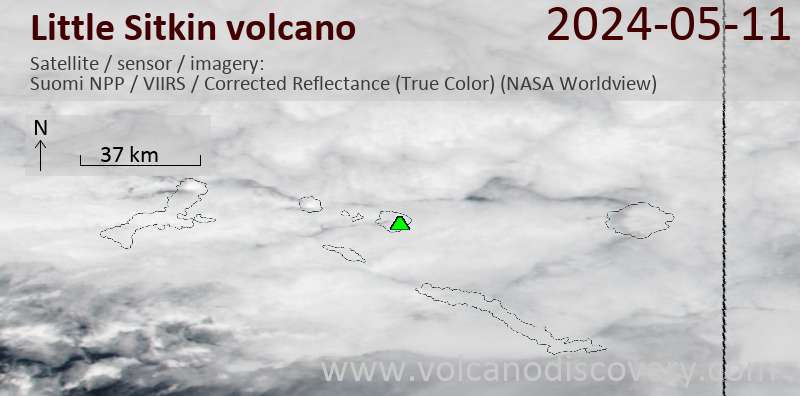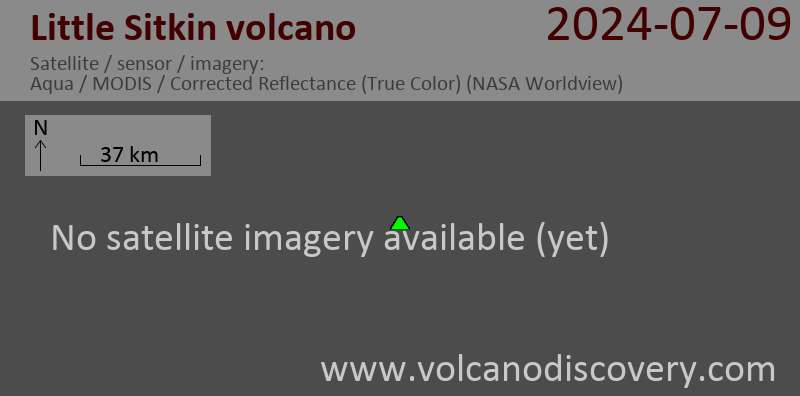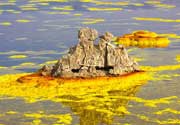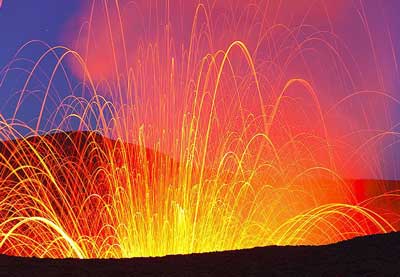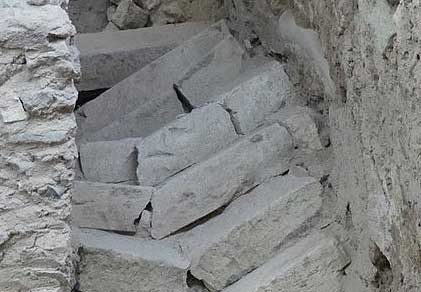Little Sitkin Volcano
Western Aleutian Islands, 51.95°N / 178.54°E
Current status: normal or dormant (1 out of 5)
Little Sitkin volcano forms a small island of the same name in the western Aleutians Islands and belongs to the Aleutian Island National Wildlife Refuge. The active stratovolcano rises 1188 m (3898 ft) in the center-northeastern part of the island. The island is located 330 km (200 mi) northwest of the community of Adak, 377 km (234 mi) southeast of Attu, and 2173 km (1350 mi) southwest of Anchorage, Alaska.
Little Sitkin Island's diamond shape is dominated by 2 nested 4 km wide calderas that formed during the growth of the volcano. Little is know about its geologic and volcanic history.
Little Sitkin had most likely 2 historical eruptions in the 18th and 19th centuries that produced ash and lava flows. There are 3 long-lived fumarolic and hot springs areas on the west flank of the volcano that contain a cluster of boiling, acidic pools.
Little Sitkin volcano eruptions: 1828-1830, 1776
Latest nearby earthquakes
| Time | Mag. / Depth | Distance / Location | |||
| Apr 19, 04:49 am (Adak) | 0.4 7.1 km | 3 km (1.9 mi) to the W | Info | ||
| Saturday, April 13, 2024 GMT (1 quake) | |||||
| Apr 13, 01:14 am (Adak) | 0.1 4.4 km | 3.4 km (2.1 mi) to the W | Info | ||
Background
Diamond-shaped Little Sitkin Island is bounded by steep cliffs on the east, north, and NE sides. Little Sitkin volcano contains two nested calderas. The older, nearly circular Pleistocene caldera is 4.8 km wide, may have once contained a caldera lake, and was partially filled by a younger cone formed mostly of andesitic and dacitic lava flows. The elliptical younger caldera is 2.7 x 4 km wide; it lies within the eastern part of the older caldera and shares its eastern and southern rim. The younger caldera partially destroyed the lava cone within the first caldera and is of possible early Holocene age.Young-looking dacitic lava flows, erupted in 1828 (Kay, in Wood and Kienle 1990), issued from the central cone within the younger caldera and from a vent on the west flank outside the older caldera. Fumarolic areas are found near the western coast, along the NW margin of the older caldera, and from the summit crater down the southern flank for a 1 km distance.
(Smithsonian / GVP volcano information)





